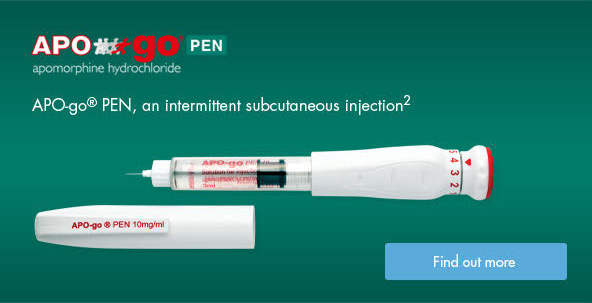Adjustment of the APO-go PFS apomorphine pump
Apomorphine is a dopamine receptor agonist and although derived chemically from morphine, is not an opioid and has no addictive or analgesic properties. It is used to treat motor symptoms in Parkinson patients.

This drug is approved by the Greek Drug Organization and improves motor fluctuations.
There are two ways of apomorphine administration:
Α) Prefilled apomorphine pen (syringe)
Patients self-administer the medication subcutaneously, depending on their needs and motor condition.
This method is particularly helpful in patients who:
- Have a slow response to oral medications.
- Have morning stiffness.
- Have a busy work life or are physically very active and need to function at a high level.
- Have unexpected OFF episodes or freezing of gait.
- Need to discontinue oral medications for a short period of time due to surgery or other reasons.
Β) APO-go PFS pump for continuous subcutaneous apomorphine infusion
There is a need for a specialized neurologist in movement disorders to initiate pump dosing. Typically, patients are pretreated with oral medications to prevent nausea associated with apomorphine initiation and then admitted to the hospital for a few hours, where dose it slowly up-titrated.
After an initial titration period, the pump is placed, for continuous subcutaneous infusion, using an individualized dosing scheme. This way continuous dopaminergic stimulation is achieved.
Neurologists and special nurses train patients how to use the pump appropriately.
The pump
APO-go subcutaneous infusion pump is a small device, the size of a cell phone, connected to a syringe filled with medication. The syringe administers, via a thin tubing system and a very fine subcutaneous needle, apomorphine continuously, in very small quantities. The needle is stabilized with sticky tape, either on the skin of the abdomen or thigh.

After waking up, patients place the needle subcutaneously and start the pump. Apomorphine is then administered continuously in very small quantities. If there is an unexpected need, additional bolus doses can be given during the day, by pushing a little button, so that optimal motor function can be achieved. At night, the needle is removed and the pump turned off.


